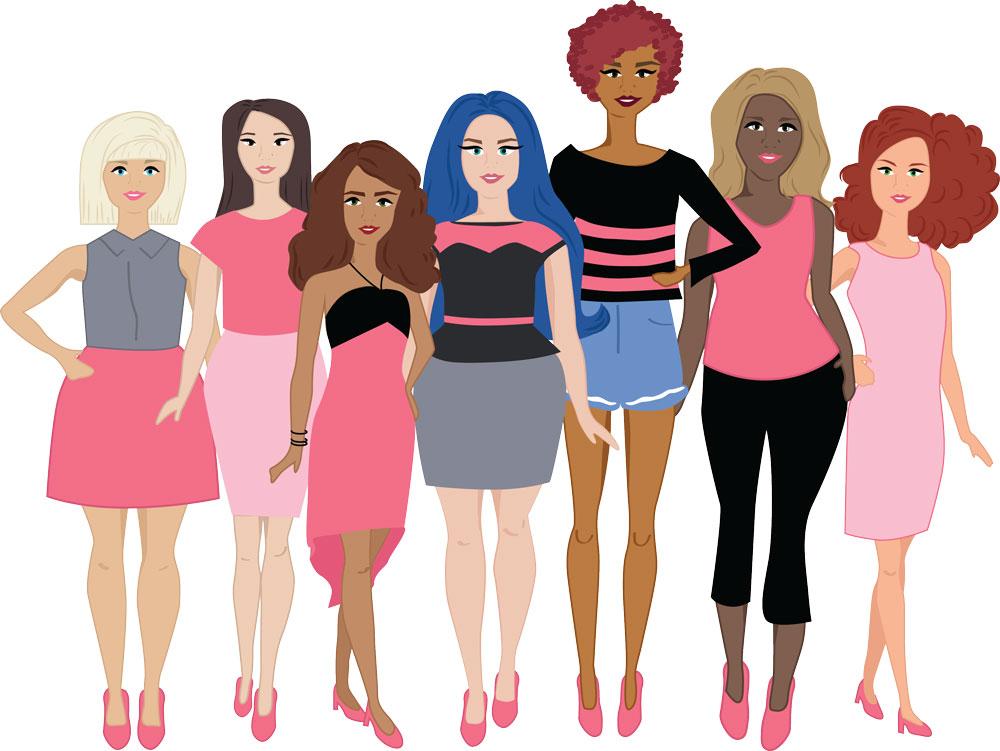
As a child, how often did you play with dolls that actually looked like you? For more than 50 years, young kids around the world have played with stick-thin, heel wearing, blonde dolls that most likely did not reflect the people they would become.
These dolls are the famous toys we know as Barbie dolls — a line of toys manufactured by Mattel, which are still sold around the world today.
Throughout its existence, criticisms of Barbie have been circulated around the concern that children view Barbie as a role model and will attempt to emulate (and evidently expect) her look as they grow up.
But that’s about to change.
In less than a week, stores will sell a new breed of Barbies that portray a more realistic and diverse image of women. Included in this new line (along with the original size) are Barbies that have petite, tall or curvy body types.
“The idea that kids can look at a shelf and see that it’s not all black and white is great,” DePaul sophomore Cesar Vicario said. “I think it’s good for the sake of what kids consider normal and abnormal.”
Many have argued that Barbie represented what an unrealistic idea of body image. Although some people will naturally develop to look a little like Barbie, many women will not grow into her perfectly proportioned body and symmetrical features, which could lead to eating disorders in an attempt to achieve the unrealistic body image.
In the 1960s, Mattel released “Slumber Party Barbie,” which came with accessories such as a scale permanently set at 110 pounds, and a book titled “How to Lose Weight.”
With a role model like her, this can lead to many problems such as low self-esteem, eating disorders, and a skewed societal perception of how women should look.
Mattel has recognized this problem and has been trying to fight its reputation by bringing new dolls on the market that represent women of many shapes and sizes. According to USA Today, last year Mattel introduced 23 new dolls with different skin tones, hairstyles, outfits and flat feet, rather than “the perpetually pointy ones meant to fit into sky-high heels.”
Although these dolls could not begin to cover the multitude of shapes, sizes and colors that women come in, it’s a start.
By the end of the year, 33 new dolls will be introduced that will allow a mixture of different body types with different skin colors, hair types and other important physical features. Spokeswoman Michelle Chidoni told USA Today that the new toys allow “the product line to be a better reflection of what girls see in the world around them.”
Other young people have expressed their childhood desire to own these dolls.
“I think it’s a great idea,” Columbia College Chicago student Mariah Wilbat said. “I wish I would’ve had them when I was little — I would have had a clan of short and curvy Barbies. I think it will make little girls less ashamed to be themselves. When I was young, having only pale white, thin Barbies made me think I had to have stick arms, a flat stomach and heels on all of the time.”
DePaul sophomore Anabel Kane said she has fond memories of dressing up her Barbies and bonding with her sisters over them. Despite the nostalgia she remembers, Kane said she is happy for the change.
“I think that this will genuinely help young girls self-esteem and it will help re-define beauty standards,” Kane said. “I honestly think that it will also help decrease bullying with younger girls.”
According to the Barbie website, this is just the beginning. They claim that, “from offering products that feature more empowering and imaginative roles to partnering with the best in class role models, we believe in girls and their limitless potential.”
For its infamous reputation of misrepresenting the real women of today, Mattel has definitely upped their game. Even though they haven’t gone as far as mixing these body types together, the beginning of the diversification of Barbie can only have a more positive effect on young girls.
In fact, it can have an effect on all children; although it is important for young girls to see themselves reflected in their toys, it is also important for everyone — young boys included — to grow up with a broader view of what women look like. This can help defeat the impossible image of beauty we have all been conditioned to expect from a very early age.
“I think playing with Barbies growing up actually expanded my creativity and helped grow my imagination,” Kane said. “I really hope that people are open minded about (the new Barbies), and are as excited as I am.”



